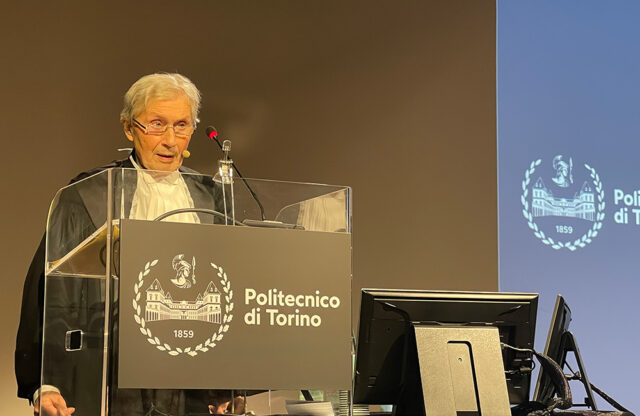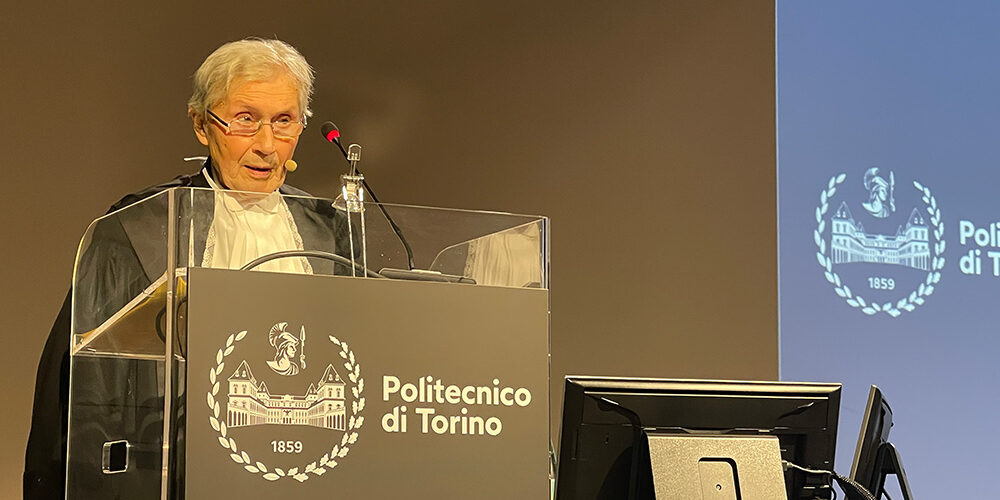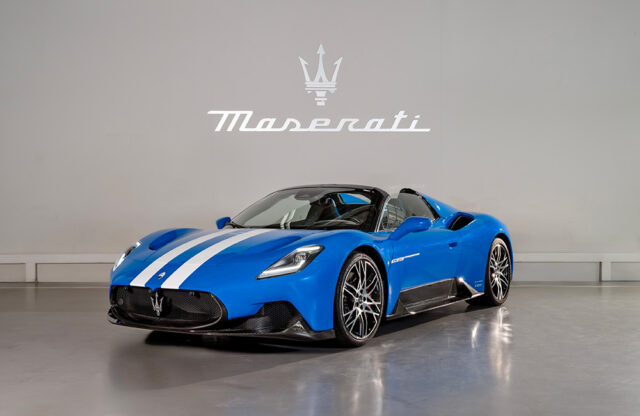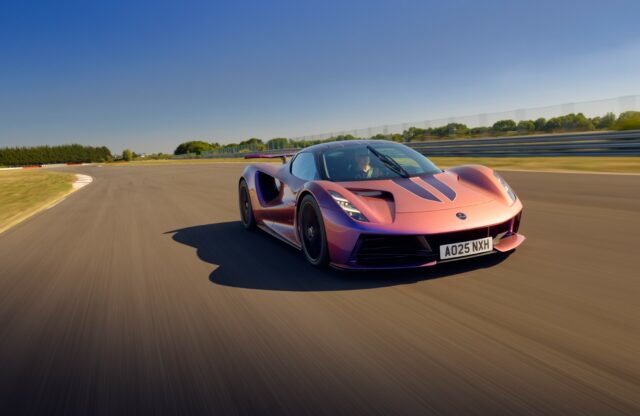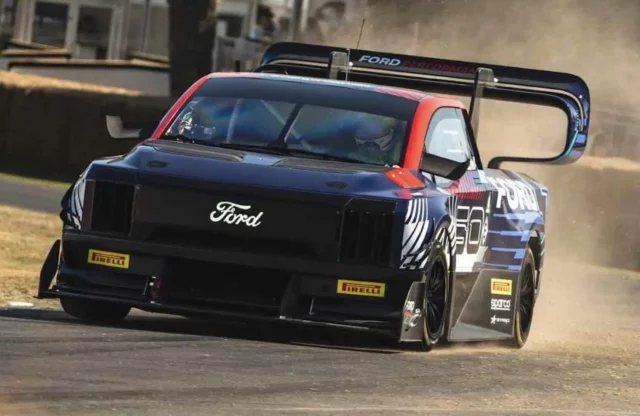WORDS AND PICTURES: NATHAN CHADWICK
There are designers and there are rock-star designers – and then there is Marcello Gandini. In an era when the word ‘iconic’ is seemingly used as punctuation when describing just about anything, Gandini’s cars truly define the word – and on Friday, January 12, 2024 the famed stylist of the Countach, Miura, Espada, Carabo and many, many more was honoured at the Politecnico di Torino, receiving a Laurea Honoris Causa in Ingegneria Meccanica (honourary degree in mechanical engineering).
Welcoming Gandini were a selection of cars organised by Claudio Ivaldi, with a colourful display of designs for the likes of Lamborghini, Alfa Romeo, Ferrari, Maserati, Autobianchi, Lancia and Bertone. However, the star was the man himself, who took to the stage among fans, fellow designers, students and family. He was providing signatures right to the end, even as he was in his car to be driven away. Read on to find out more about what he had to say about design, technology, the future and the nature of the car itself.

Starting a project from a sheet of paper and a pencil means there is an idea
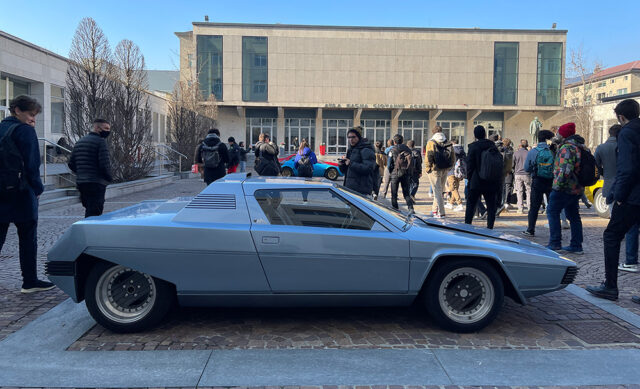

Marcello Gandini firstly paid tribute to his wife Claudia, whom he met at the age of 23. “She continues to be the key to my success and the great results we have achieved together,” he said. “With my creative mind, she has the ability to create stability and solidity, and has supported me, and has organised and maintained relationships – the first person to whom I dedicate this recognition is undoubtedly her.
“I also want to dedicate this degree to Mariella Mengozzi, whom I will always remember for her radiant direction of the Mauto in Turin and for her great humanity and kindness. Thanks, finally, and especially, to the proposers, for the great support and for their friendship: Alfredo Stola, Gautam Sen, Claudio Beccari, Flavio Manzoni, Mike Robinson, Giuseppe Menga, Paolo Paloschi and, again, Mariella Mengozzi.”

Gandini on his origins… and rebellion
“The origins of my education lie in a family tradition that did not consider many deviations (we are talking about the mid-1950s, early 1960s) – the natural outcome was humanistic, literary and classical studies,” Gandini said. “My father Marco had two degrees and was an orchestra conductor. As a matter of course, I attended the classical lyceum and studied the piano. All this classical culture, with such a rigid and conservative context, and the imposition of pre-established patterns, immediately triggered in me an unconditional passion for engines, mechanics and technology, whether it be design, racing or innovations.
“The first message I want to derive from these considerations, and communicate to future young engineers and designers is: extract from limitations and impositions a strong, stubborn and constructive sense of rebellion.
“In the first year of high school, with the money allocated to me to buy a Latin translation book, I bought Dante Giacosa’s Motori Endotermici. I read it, studied it and analysed every line. Shortly after buying it, I knew it by heart. At the end of high school, I definitely became a rebellious boy, because I refused to enrol in university. Instead, I followed my vocation: designing cars. In the family, this was not looked upon well.
“At that time, you couldn’t stay at home without following the rules and the will of the parents; I found myself living with a friend, with no money and many crazy ideas. I made small modifications to cars for hillclimb races, sometimes even with bodywork changes. Small things, nothing that could give me a living. At the end of the 1950s and the early 1960s, I realised that, to survive, I would have to be less selective, and I started to dedicate myself to other fields besides mechanics.
“I started drawing in an era when the word ‘designer’ did not exist in Italy. You could study to become an architect or engineer, but there were no degree courses for what I wanted to do. I made drawings of anything – sketches for advertising, cartoons, furniture and, little by little, car drawings for bodyshops, with a few modifications. It was still too little to say I had a job, but it was enough for me to sense that I had a direction.”

Gandini on referencing history and his big break
“The second message I want to convey here today is: to design something new, you need to know everything – everything – that has already been done in the past in your field. Knowing the history of design and the history of innovations in general – let’s say, from Leonardo Da Vinci onwards – is a mandatory requirement for every future designer.
“Returning to [me], from then on, the path began to clear, or at least to appear less steep and impossible. As a self-taught person, I got used to drawing at full scale, even without ever seeing how it was done. I drew on tracing paper, on the floor of my room, without the wooden templates used at the time. Gradually, I obtained them so that I could create credible technical drawings.
“The first time I took my drawing to a modeller for bodywork, he, hanging the sheet on the wall, stayed silent for 15 minutes, observing it. Then, shaking his head, he said: ‘I don’t understand anything.’ I didn’t know what to say and how to explain myself. Then I understood: I had drawn in the opposite direction to the common practice of orienting the front of the car to the left. Fortunately, the drawing was on tracing paper; I turned it around, and the modeller’s eyes lit up: it was clear, and it was also – he said – quite decently executed.
“Here I can say that my career as a designer began. I did bodywork jobs, studied, drew on my own futuristic cars – they were often too extreme, but certainly original and interesting to look at. I had put together a portfolio and, with this, I presented myself at the meeting with Nuccio Bertone, who immediately proposed that I work for him.
“A couple more years passed, and at the age of 26, I became his chief stylist. It was a job I always carried out with extreme autonomy, thanks to Nuccio’s entrepreneurial foresight and courage. I think it is difficult today to imagine such freedom of action for an unknown 26-year-old, but Nuccio had a unique ability to recognise talent and, above all, to put it in a position to express itself at its best.”

Gandini on the car’s role in society
“The third message I want to spread is: even if it’s extremely difficult at the beginning, never stop looking for the right job for you, for the people who value you and put you in a position to express your abilities and talent. I must say that I have also been extremely fortunate, because the 1960s were an extraordinary period for a designer, a confluence of factors that had never occurred before, and, in the field of automobiles, has never occurred since. There was a desire for new things, irrepressible energy, a mindset focused on the future and the belief that anything was possible. Man was on the moon, and there was something different in the air that influenced almost everything, including the car.
“What is a car? The car is a means of transportation, but there are many means of transportation. The car is an industrially manufactured product intended for sale to an individual or a small group of individuals – for example, a family. But let’s go a little deeper. The car is an industrial object easily spread and consequently capable of influencing habits, creating fashion phenomena, acting on trends and public tastes. Here, we can then ask ourselves what design is in the field of the automobile, what its purpose is. It is the part of the design that introduces elements aimed at improving the object, promoting the success of a model. The design of a car is its first form of advertising. Design is communication.
“So far, everything is very true – and a bit boring, too. What makes the car something extraordinary has nothing to do with all this. The car is a dream, a desire, lasting for millennia. It is half flying carpet and half house. It is the magical object that gives us the freedom to go anywhere we want in an instant, offering protection, shelter, space that moves with us. It is freedom, individual freedom. This, for me, is the very essence of the car, to which many other emotional elements are added.
“A car is the pleasure of owning a polished, seductive, important object. It is also an expression of the romantic side of mechanics: the psychological extension of physical possibilities, the continuation of us, of our desire for speed, strength, perfection, beauty. Furthermore, the car is the object that exalts the only true invention of man, the only element not existing in nature that man has added: the wheel. The aeroplane existed in nature [via] birds; the ship [via] a floating log; electronics [via] the nervous system. The wheel, however, did not. There were round stones, a washer made of a tree trunk that could roll, but man added the pivot, and from there, he moved the world.”

Gandini on bringing a car to life
“How is a car born? The prerequisites for every project today are marketing indications, objectives to be achieved, characteristics to assert in that model: performance or economy, innovation, or ease of acceptance by the public, overall architecture, good functioning of the model, equipment (depending on the price range), safety (real or desirable). The function of the designer in this process is to: extend the range of potential customers to the maximum; highlight the technical characteristics and brand image; enhance the end user with the character, the performance, the richness or the essentiality of the fittings; have a clear knowledge of the project assumptions; have a critical knowledge of his sector (historical and current); and create different emotional solutions to a practical problem.
“In this last sentence is the most important function of the designer: to provoke a feeling, a seduction, an emotional reaction. The designer must be able to ensure that the owner’s personality is represented by that model (in a positive sense often, sometimes less). Favouring this seduction action is the designer’s task. The car is a complex balance of balances, for example, a city car will say: ‘I am easy, friendly, nice, I respect pedestrians, I inspire trust, I am kind, I am valuable, but I am possible, I make myself liked.’ An extreme sports car will say: ‘I am aggressive, powerful, fast, difficult, but I reflect my charm on those who own me.’ A large sedan will say: ‘I am elegant, my owner is an important, balanced, wise person.’ And so on – the designer is the one who makes a car speak.
“A designer can also choose a non-style (which is still a style), a way to avoid comparison: a deliberately disharmonious, massive, somewhat ugly car tells us: ‘I am unique, I have my charisma, it will be chosen by those who do not want to conform, those who are not afraid to be different.’ The car has a social and cultural role, it is a significant part of the urban and general context, an object that defines people, renewing and updating an ancient dream. From these considerations begin the conception of the car, with the initial designs being an irreplaceable way to fix ideas, and then develop them on CAD, models and prototypes.”

Gandini on technology
“The fourth message is: use technology for what it is, a means to implement ideas. But don’t stop writing, drawing, calculating, creating sketches on paper. The pencil is an extraordinary means of connection between the brain – ideas – and reality. Starting a project from a sheet of paper and a pencil means there is an idea. If there is no original idea, no technological wonder can create it for you.
“There is also a role of the car that deserves special attention, which has been a common thread throughout my career and is perhaps at the root of the recognition I receive today. The car is a constant engine of innovation, technological, engineering and functional research. In an era where design suffers from too much standardisation, where everything seems to have already been done, perhaps we should rethink the object itself. This is what I have always focused on, and with even greater commitment in the past 20 years. Today more than ever, the car must be thought of and designed as a whole, while often the interior, exterior and mechanics are still considered separate parts, almost separate between form, technique and construction methods.
“In the profession and teaching of design, trends are seen more than ideas. Style chases itself, trying to endlessly repeat successful cars. Where can innovation be then? We must find the courage to change. The car is still the only industrial object for which the shell is built first, and then, with a thousand operations, the functional mechanical parts, instrumentation, furnishings, little pieces and coverings are added. A bit like ships in bottles.
“My research in recent decades has focused precisely on this problem. Simplify, reduce to a few units the number of pieces that make up the architecture of a car, use materials that are structured and finished at the same time. Working with composites, sandwich structures, with pre-assembled mechanics completely and partly formed in the structure itself, I managed to create not just a ship built in a bottle, but a type of bottle to which the ship could join already complete. A design and construction method that allows a drastic reduction in the necessary industrial operations, and therefore, overall costs.
“Back in the 1980s, a new engine, entirely designed and built according to my idea, was presented with the mechanics on one side and the shell next to it, assembled in 15 minutes by two workers, producing a complete and running car. This project and prototype, covered by various patents, were acquired by a large French automotive company.
“More recently, a very articulated evolution of this research has been developed for a large Indian automotive company, with new patents and extremely interesting composite materials. Also in this case, the presentation was made with the car disassembled. Some elements on one side, others on the other – and with ten minutes’ assembly, it was started and I was able to invite the company’s No. 1 to climb in the passenger side and go for a ride together. Creating the same functions with very few elements is the challenge of the future.”

Gandini on the future of design
“The last message I want to convey to the young is: dare. Fight to never do what someone has already done, do not even repeat yourselves, find solutions, perhaps difficult, but new.
“I know it’s not easy. I see today’s automotive companies, especially those dealing with luxury products, indulging in the temptation to make products that are always the same, infinite replicas of their own past, while the right path should be, to respect that past, never to copy it, to avoid ruining it and at the same time to show entrepreneurial and creative courage to look ahead, to support true genius, innovation and avant-garde. I wish for an era as close as possible, where change and courage are a mandatory voice in the business plans of companies, and in the strategy of every CEO. I am on your side.”

The Politecnico di Torino’s Professor Massimo Rossetto said in his tribute: “During a long and successful career, Marcello Gandini was not only a master of design, but also a man with great engineering vision. A figure of an inventor of other times, who knows how to materialise his thoughts through the project and make his ideas accessible to everyone. His projects have never been limited to appearance, but have always shown the ability to conceive objects as a whole between mechanicals, technology and aesthetics, always seeking innovative solutions.”
More details on the Politecnico di Torino here and check out our top ten Gandini designs here.
Lectio Magistralis, Marcello Gandini – Ceremony for the conferral of an honourary degree in mechanical engineering – Polytechnic University of Turin. Copyright Marcello Gandini.
